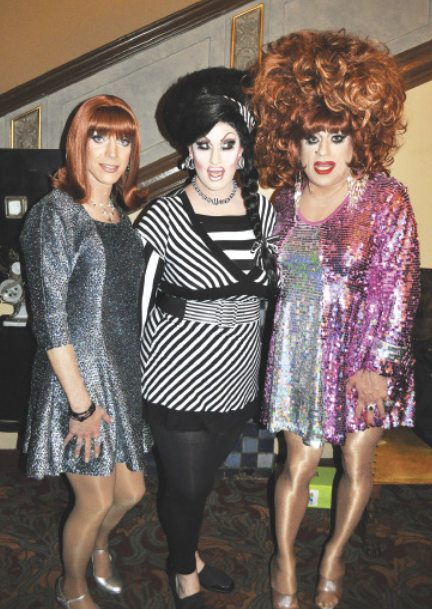
By Donna Sachet–
When lost in an unforgiving desert, one’s only hope is the appearance of an oasis, a welcoming harbor of refreshing water, cool shade, and protection from the punishing elements. It seems that San Francisco is about to lose that oasis and all it has come to represent in the city. Yes, the popular club on 11th Street, Oasis, has announced it will close at the first of the year. Some have wondered if this is a clever ploy to secure new financial partners or to garner some large unrestricted gift, perhaps from Silicon Valley, to shore up the club and ensure its survival, but the explanation from D’Arcy Drollinger is painfully frank: shrinking audiences and declining bar sales combined with climbing costs spelled the end for Oasis.
Let’s address each of these trends. COVID was the death knell for many extracurricular activities. Audiences either shrank or disappeared entirely as we all sheltered in place or created small pods of safety, largely confined to personal living spaces. And we have been slow to emerge from that isolation. If even movie theaters are continuing to see smaller audiences with more complaints about ticket prices and reduced amenities, just imagine what live theaters are facing.
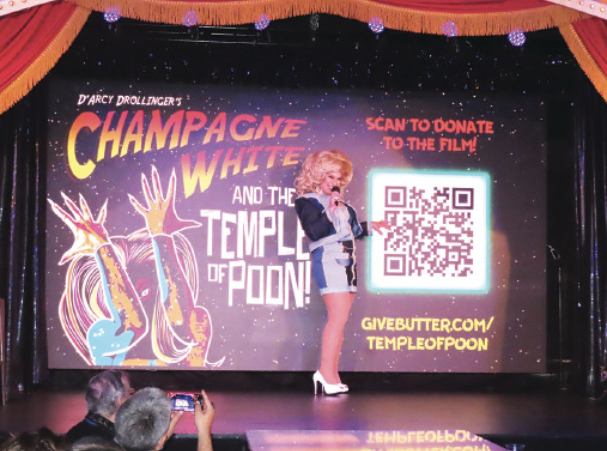
Would reduced prices entice a new or returning audience? That answer is unknown, but as insurance, security, promotion, and other expenses continue to climb, reducing the admission price is unfeasible. And, in the case of Oasis, we have heard of D’Arcy’s firm commitment to pay performers a decent wage, creating another impediment to reducing the price of admission. But good for her! In an era when RuPaul’s Drag Race personalities crisscross the country, earning thousands of dollars for each appearance, shouldn’t our own local talents be properly compensated? Let’s face it. Certain fixed expenses come with any public venture and discounts at the door put inordinate pressure on that venture.
Although we can put much of the blame on COVID and its aftermath, the world has also changed in other significant ways. Many people live on social media. They find entertainment, diversion, and even partners on the internet without leaving their home and without extra expenses. Want to watch a blockbuster new movie release? Go to Netflix. Want to spend hours comparing fashion trends or reveling in the talents of your favorite diva? Go to YouTube. Want to meet the man or woman of your dreams? The internet sources are extensive.
In order to address the shrinking audiences and declining bar sales of not just Oasis, but most venues in San Francisco, we have to get people out of their homes. Personally, I’ve never understood spending hours in front of a television or computer screen, when so many opportunities exist elsewhere. I love to get dressed up, try a new venue, experience a new art form, catch up with friends, and meet new people. And it’s not just because I write a social column for the San Francisco Bay Times! When people talk about getting lost in a rabbit hole on the internet, we are discovering that this experience is by design. Algorithms are carefully designed to steer you to sites you will like and to stimulate your pleasure senses. But how can that compare to live experiences?
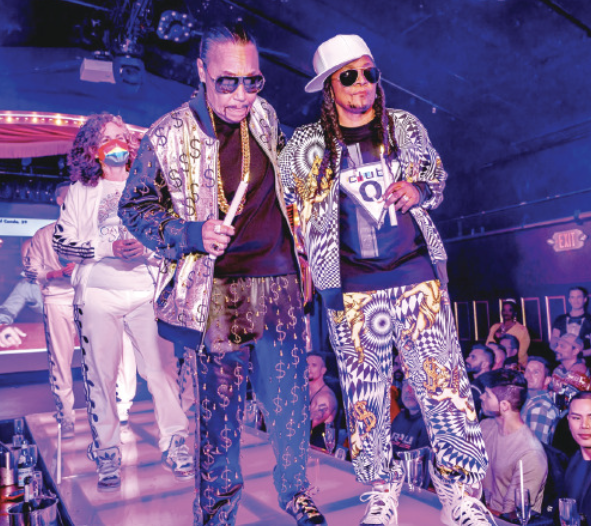
Live entertainment often challenges our preconceptions, makes us uncomfortable, and/or presents us with new ideas. Live venues demand a response, encourage a group experience, and enrich our often-humdrum lives. I dare anyone to compare even the best produced online video with a live performance of Coco Peru or Varla Jean Merman at Oasis. Each of us has friends who have a creative side, maybe rarely seen in public. Why not go to see them compete in a drag competition or share the stage with more seasoned performers for the first time? Oasis deserves credit for championing alternative talents, like Drag Kings, not easily available elsewhere. From drag and burlesque, comedy and strip tease, solo shows and television parodies, local talents and touring stars, Oasis has it all, but not enough people bought tickets and attended.
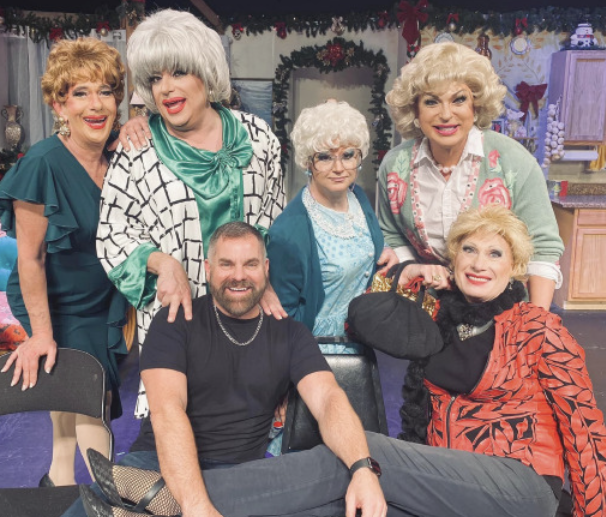
The issue of climbing costs is equally tough to tackle. Because I have not been on the management side of a venue, it is less familiar to me, but we have all heard of the many city fees, rising insurance rates, crime statistics, and other expenses that are unavoidable and always escalating. There has to be a way to balance those expenses with a vibrant and supportive audience, willing to pay for entertainment experiences and willing to leave their homes to get it. The long-running Golden Girls Live found a new home at the Curran Theatre; will more shows have to seek out new locations outside of our established neighborhoods? How much is too much to pay for entertainment?
Our community reflects a wide range of disposable income. Each of us decides how many times we can pick up a Starbucks coffee, eat out at a real restaurant, take a trip, or engage in genuine live social interaction. But when it comes to preserving queer entertainment, we should each dig deep.
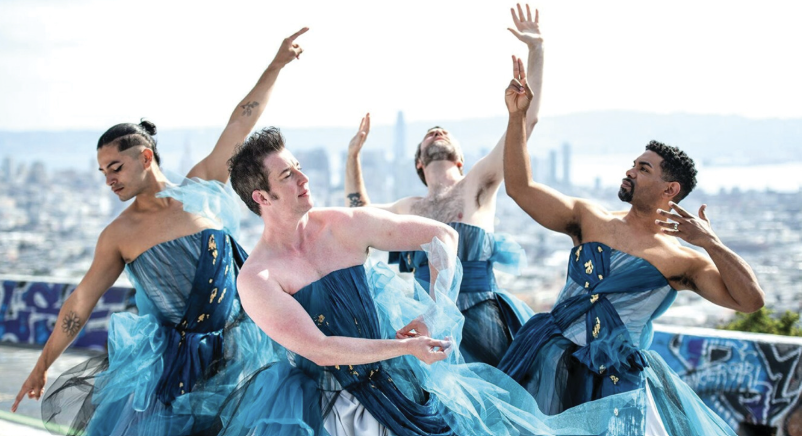
Some would simply count the closing of Oasis as another casualty of the continuing doom loop in San Francisco, but as those of you who know me have heard me say, “I believe in a hope spiral!” Yes, there are indications of a different trend. The Stud was doomed, but a creative ownership model rescued it from the doom loop. The SF Eagle seemed destined to close, but leaders in the Leather Community found a solution and created a vibrant square featuring the largest Leather flag in the country. The SF Gay Men’s Chorus bought the building in which they rehearse and created the Chan National Queer Arts Center, encouraging musical and other live experiences. People like Juanita MORE!, Sister Roma, BeBe Sweetbriar, Katya Smirnoff-Skyy, Mercedez Munro, and others are constantly offering new and exciting reasons to get out of the house. How many of you have gone to the Compton Cafeteria Riot play any Friday or Saturday in the heart of the Tenderloin District? How many of you have attended a Sean Dorsey dance performance, a play by a local playwright at the New Conservatory Theater Center, a community forum at Manny’s, or even had a drink at El Rio, Beaux, or Powerhouse lately?
We live in a vibrant city full of opportunities to widen our worlds, to challenge our thinking, and to meet new people. We can either surrender to this ridiculous doom loop or we can be a part of the hope spiral, with every piece of good news building on the one before it.
SF Pride faced new and unprecedented challenges this year, but from my eyes, its leadership steered it to a record-breaking success. The first lesbian bar in decades opened its doors on Market Street recently and Rikki’s has been packed regularly. The sometimes-sleepy Castro neighborhood is about to see a renaissance with the reopening of the legendary Castro Theatre in January of 2026 and the reconfiguring of Harvey Milk Plaza.
Oasis Arts promises to continue to present dynamic entertainment beyond the four walls of its club, just as AsiaSF performers have transcended their physical location. If Sunday’s a Drag can draw capacity audiences to Club Fugazi in North Beach, anything is possible. We can choose to watch idly from the sidelines or actively engage in positive steps towards a new reality. Put down that computer and get out of the house! You won’t regret it.
Donna Sachet is a celebrated performer, fundraiser, activist, and philanthropist who has dedicated over two decades to the LGBTQ Community in San Francisco. Contact her at empsachet@gmail.com
San Francisco’s Changing Queer Nightlife
Published on July 31, 2025
Recent Comments